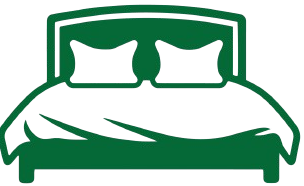The bookshelf, a simple yet versatile piece of furniture, has been a staple in homes and libraries for centuries. From the towering bookcases of grand libraries to the humble shelves of cozy reading nooks, bookshelves serve as both functional storage solutions and decorative elements.
A Brief History of the Bookshelf
The origins of the bookshelf can be traced back to ancient civilizations, when simple shelves were used to store scrolls and other written materials. Over time, bookshelves became more elaborate, with features such as drawers, compartments, and built-in bookcases. In the 18th and 19th centuries, bookshelves were often ornately decorated with carvings, inlays, and gilded accents.
The Versatility of the Bookshelf
Bookshelves are incredibly versatile and can be used in a variety of ways. Some of the most common uses include:
- Storing Books: Bookshelves are primarily used to store books, of course! They can be used to organize books by genre, author, or subject matter.
- Displaying Decorative Items: Bookshelves can be used to display decorative items, such as vases, candles, or framed photos.
- Creating a Home Library: A large bookshelf can be used to create a dedicated home library, where you can store and enjoy your book collection.
- Dividing Space: Bookshelves can be used to divide a room into different zones or create a sense of privacy.
Types of Bookshelves
Bookshelves come in a wide range of styles, materials, and sizes to suit different tastes and needs. Some of the most popular types include:
- Freestanding Bookshelves: These bookshelves are freestanding units that can be placed anywhere in a room.
- Built-in Bookshelves: Built-in bookshelves are custom-made to fit a specific space and are often part of the overall design of a room.
- Ladder Bookshelves: Bookshelves with a ladder-like design that allows for easy access to books on higher shelves.
- Corner Bookshelves: Bookshelves designed to fit into a corner of a room, saving space.
- Wall-mounted Bookshelves: Bookshelves that are mounted on the wall, freeing up floor space.
Choosing the Right Bookshelf
When selecting a bookshelf, consider the following factors:
- Size: Ensure the bookshelf is the right size for your space and the amount of books you need to store.
- Style: Choose a bookshelf that complements the overall aesthetic of your home.
- Storage Needs: Consider the type of storage you need, such as shelves, drawers, or compartments.
- Materials: Evaluate the durability and maintenance requirements of different materials, such as wood, metal, or laminate.
- Budget: Set a budget for your bookshelf purchase.
Incorporating a Bookshelf into Your Home
A bookshelf can be a stylish and functional addition to any home. Here are some tips for incorporating it into your space:
- Create a Home Library: Use a large bookshelf to create a dedicated home library where you can store and enjoy your book collection.
- Display Decorative Items: Use bookshelves to display decorative items, such as vases, candles, or framed photos.
- Divide Space: Use bookshelves to divide a room into different zones or create a sense of privacy.
- Mix and Match Styles: Combine bookshelves with different styles of furniture for a unique and eclectic look.
The bookshelf, with its versatility and functionality, is an essential piece of furniture for any book lover. By carefully considering your needs and preferences, you can find the perfect bookshelf to enhance your space and create a comfortable and inviting reading environment.

